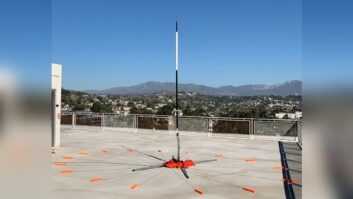When Radio Systems recently decided to sell its low-power AM line, its longtime dealer Information Station Specialists acquired those models. We asked owner Bill Baker about the transaction.
Bill Baker
Supply Side is a series of occasional interviews with industry manufacturers and service providers.
Radio World:Which product or products have you acquired?
Bill Baker: Information Station Specialists will now be manufacturing and marketing two very specialized transmitters: the TR6000, a 10 Watt AM transmitter, which has Part 73, Part 90 and Part 15 applications; and the Talking House/I A.M. Radio 100 mW AM transmitter, which is certified as a Part 15/unlicensed device.
RW:Where are these being used in the world of radio?
Baker: There are two versions of the TR6000 transmitter: The model HQ5.0 is the workhorse transmitter for the Travelers Information Stations, which are licensed by government agencies and medical response entities. A related version, the TR6000 Model 15.73 can operate on educational campuses and camps and even as a drop-in unit for broadcasters who need to run at reduced power while their main transmitter is off-line.
The Talking House/I A.M. Radio Transmitter is the classic product known for its applications in real estate and other unlicensed applications by businesses, visitors bureaus, parks and historical sites.
RW: You mentioned that beyond TIS uses, these might be of interest to AM stations. Why?
Baker: The TR6000 Model 15.73 transmitter, specifically, is a tool that has been utilized by AM broadcasters and engineers over the years as a quick means of putting up a signal should a failure occur. Because it can operate on DC with less than 40 Watts of power, the unit can be set up to kick on automatically in an emergency via solar/batteries at a remote site when AC power to the main transmitter is severed. And because it is frequency-agile, it can be a cost-effective resource for an engineer who manages multiple AMs.
And with regard to TIS, broadcasters, engineers and consultants are actually in the perfect position to develop a revenue stream and increase their engagement with a community by installing and managing a TIS radio station for a local government or medical response agency that wants to provide emergency, event or visitor and travel information. There is an example of one broadcast consultant who designed and implemented a whole state-full of TIS stations for their state Department of Transportation on the East Coast.
Everyone knows that broadcasting’s content has become more centrally produced over the years and this has increased the public’s appetite for more locally-driven content — something that localized radio stations can provide if professionally managed.
RW:Are new carrier current radio stations still being built, or has that market pretty much gone away with the onset of LPFM and online streaming?
Baker: I have not heard of a carrier current station being installed at a school in many years. However, it is noteworthy that both of these transmitters are used under Part 15 with conventional whip antennas on high school and university campuses across the country for sports play-by-play or as part of broadcast training and media production curricula.
RW:What were the terms of the business acquisition?
Baker: The purchase was primarily the intellectual property with parts and inventory. Information Station Specialists has been a reseller of Radio Systems products for 30+ years, so it was easy to set up the terms with a trusted partner.
RW:Where will the product be manufactured and how will it be supported?
Baker: We have production at our Michigan headquarters as of June 2017. Warranty, repair and support will be available through the providing company, as always.
RW:What else should we know about the product or the transaction?
Baker: The designs of these products have time-tested over decades, so their reliability is well established. Moreover, their designs are quite unique: the TR6000-HQ5.0 is the only TIS transmitter on the market approved to broadcast the full audio bandwidth without the requirement for a 3000 Hz audio filter which was previously required.
Both models can tune up on any frequency — even 9 kHz spaced — and are approved for military use. The TR6000 will drop into a 19-inch rack with convenient indicators and controls which require only 1 RU of space.
We provide both TR6000 models in various packages that include all electronics, antenna systems and the required hardware, licensing (as required) and installation/training services. But we are also happy to partner with broadcasters who want to present these solutions to their marketplace.
The Talking House AM Transmitter is an unlicensed solution which is unique in its onboard dual-message audio recorder, automatic tuner, antenna format and professional control layout. There are many thousands of the units in the field, making it likely the most well-known license-free transmitter ever made.
We are pleased to make both of these communication solutions available to the markets in which they have served — and to new ones, which present themselves every day.
For information on these products, see www.theradiosource.com and www.talkinghouse.com.











